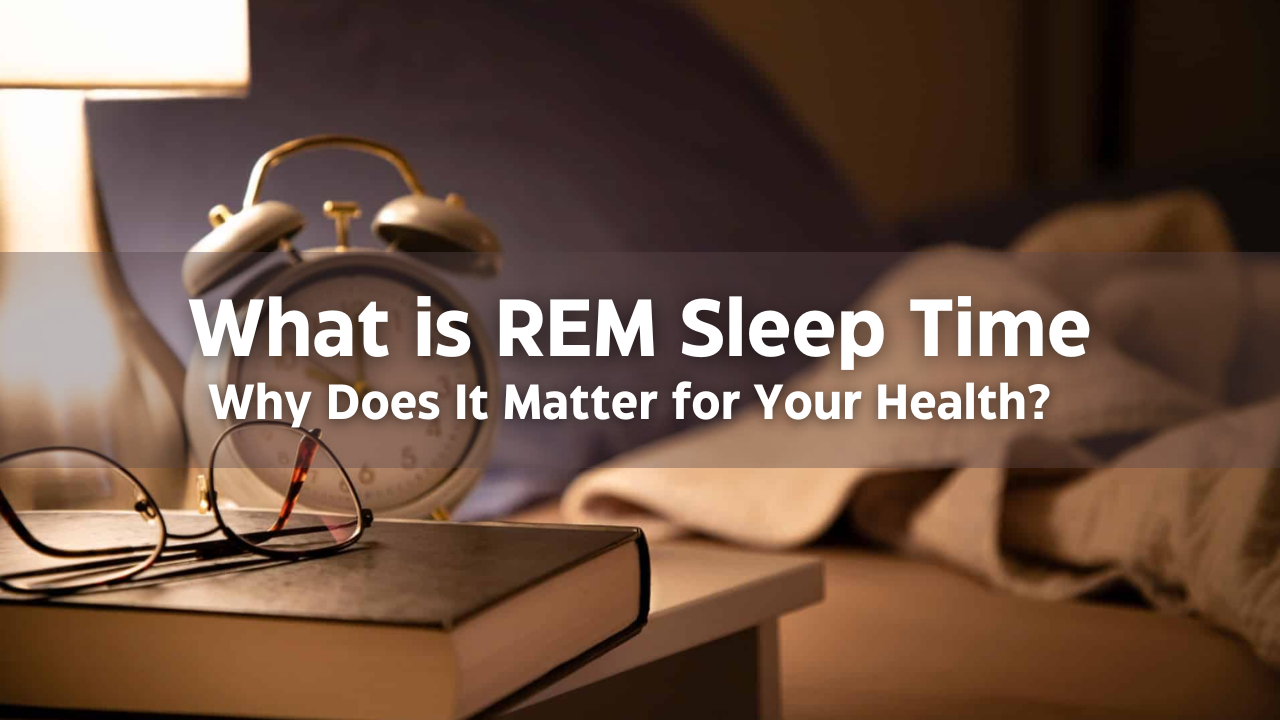As a kid I always used to wonder about what happens when we sleep, do my soul floats around or I visit some other realm, all sorts of imaginations you know! I bet these thoughts come to your mind as well and that’s why you are here eager to learn about REM sleep and its mysteries. 😴😴
You may have heard about this REM sleep before but the problem is there are some myths attached to this phase of sleep as well. You know these researchers, they keep changing their opinion. But here today we will debunk the myth about REM and learn about it like an expert haha.
Well, buckle up because we’re about to take a journey through the fascinating world of sleep, with a spotlight on one of its most intriguing phases: REM sleep.
Understanding Sleep: What is REM Sleep Time?
So when we go to sleep it doesn’t just happen in a second like Nobita, we actually sleep in 4 stages. Only slowly do our sleep gets deeper and deeper, finally reaching the Rapid Eye Movement stage, which we affectionately call REM Sleep.
- Stage 1 This is the lightest stage of our sleep cycle, you can be easily awakened by slight noise as your body is still alert.
- Stage 2 Sleep gets deeper, heart rate and breathing slows down and body temperature falls. That’s the reason why you feel chills when you wake up in the morning.
- Stage 3 Now you go into the restorative sleep mode, that heals and promotes growth in your body. This when your immunity boosts.
- Stage 4 This is the REM stage,
Let’s start unraveling the mystery behind REM sleep. REM sleep, also known as Rapid Eye Movement sleep, is a fascinating stage of the sleep cycle characterized by rapid eye movements, increased brain activity, and temporary paralysis of the muscles. It is one of the key stages of sleep and plays a vital role in promoting our overall health and well-being.
It is one of the four distinct stages that make up the sleep cycle.During REM sleep, your brain activity resembles that of being awake, and this is when the magic happens in your health.
What Happens During REM Sleep?
During REM sleep, our brains become highly active. One might assume you are awake while actually you are dwelling in your deep slumber.This stage is commonly associated with dreaming, as our brain processes emotions, memories, and experiences through vivid and immersive dreams. It is a time of mental restoration and consolidation of learning.
Characteristics of REM Sleep
- Rapid Eye Movements: This distinctive feature of REM sleep is where the name comes from. The eyes move rapidly in various directions, mirroring the intense brain activity taking place.
- Reduced Muscle Tone: REM sleep triggers a natural state of muscle relaxation, except for certain muscles responsible for essential functions, such as breathing and eye movement.Increased
- Brain Activity: The brain exhibits heightened neural activity during REM sleep, with characteristics similar to that of wakefulness. This increased brain activity is believed to be crucial for memory consolidation and emotional processing.
A lot of people think they dream only during REM sleep, but that’s not true and it has been proven!
Some early research did promote the myth. In the 1950s Euegene Aserinsky, recorded the first scientific report of REM, as a result of an experiment he did on his 8 years old boy.
His discovery promoted the study of sleep in which participants were awakened during the REM sleep cycles, and they would explain vivid dreams which lead them to believe REM sleep is for dreaming only.
“Further research proved us wrong. We often dream during REM sleep, but we don’t need to be in REM sleep to dream” says William Domhoff.
When in the 1960s truth about Truth about Non-Rem sleep was discovered it was tough to undo the sleep dream myth about REM.
The stages of sleep is characterized as Non-rapid eye movement that are 3
namely,
Light sleep(N1)
Deep Sleep(N2)
Deeper Sleep(N3)
and Rapid eye movement (REM)
This is the order of our sleep cycle, N1. N2, N3, REM. A person goes through these cycles of sleep every night 4-5 times also depending upon the total duration of sleep. Each cycle takes a total of 90-110 minutes. The first REM stage is generally short but as the sleep progresses the duration increases.
How Much REM Sleep Do You Need?
The recommended amount of REM sleep varies depending on your age. Infants typically spend about 50% of their sleep in REM, while adults spend approximately 20-25% of their total sleep time in this stage. On average, adults require between 90-120 minutes of REM sleep per night.
Getting sufficient REM sleep is essential for your well-being. It contributes to cognitive function, emotional well-being, and overall mental health. Lack of REM sleep can lead to difficulties in concentration, memory problems, mood disturbances, and an increased risk of developing certain mental health disorders.
REM Sleep vs Deep Sleep
While deep sleep is essential for physical restoration and growth, REM sleep primarily focuses on mental restoration. Deep sleep helps rejuvenate our body, while REM sleep is responsible for rejuvenating our mind. Both stages are equally important and contribute to overall well-being.
REM SLEEP BEHAVIOUR DISORDER
This is a kind of disorder which causes you to act out physically during the sleep often due to unpleasant dreams. You may start kicking or punching during the dream or even laugh or talk. Generally your body goes into a deep relaxation stage while REM sleep and only the brain remains active, but in this case your physical reactions start responding to the dreams. According to the National Sleep Foundation only less than one percent of people are estimated to have REM sleep behaviour disorder.
How Can I Make Sure I’m Getting Enough REM Sleep?
Now that we know what REM sleep is and its importance it becomes necessary to ensure getting an adequate amount of REM sleep. Here are some practical tips to help you optimize your REM sleep:
Maintaining a schedule is important, if you have a fixed time to hit the bed and get up. It really benefits the overall sleep quality allowing you ultimately to have enough REM sleep. If you wonder about how much you should sleep, read our article: How much sleep do you need by age and gender ?
Sleep in a relaxed environment so that your body remains at ease throughout the night. You can use some lavender oil which relaxes your body. Just a few drops for the smell.
Do not use mobile phones or laptops just before sleeping, instead you can read a book.
Don’t go to bed with a stressed mind, this will hinder your sleep. You can try some 5-10 mins meditation for a relaxed mind. I generally prefer practicing YOGA NIDRA right before bed. This gives me quite a relaxing experience. Let me add my favourite YouTube link for you : YOGA NIDRA before Sleep.
You must keep a gap of at least 2-3 hours between bedtime and consuming booze or caffeine.
A light stomach is a friend of sound sleep. Have a healthy dinner at least 2 hours before sleep.
If you suspect you have a sleep disorder or are experiencing persistent sleep disturbances, seek guidance from a healthcare professional.
You use the new age advanced technology to track your sleep schedule, Apple watch easily allows you to track your sleep schedule with various other features that make your life convenient.
Let’s see how to do this: Track your sleep on apple watch
Remember, prioritizing your sleep and implementing these strategies can help ensure you receive enough restorative REM sleep, supporting your physical and mental well-being. Sweet dreams!
Also Read:

